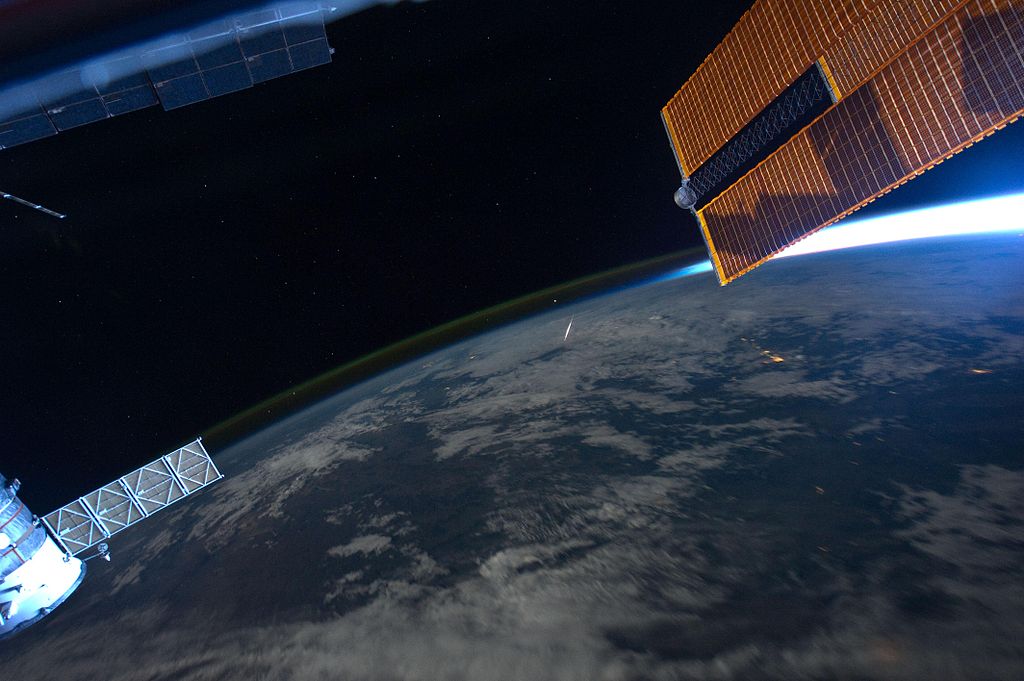The Perseids are here! This annual meteor shower is one of the best and brightest, but this year it’s predicted to be even more spectacular. So, if you’re in a dark place tonight, look up. You may see a 4.5-billion-year-old remnant from the solar system burn up in our atmosphere.

Comets are conglomerations of ice and dust leftover from our solar system’s formation. A lot of the material that swirled around our young sun developed into the eight planets and numerous dwarf planets and asteroids. Some of the smaller bodies that formed were forced into elongated orbits by gravitational interactions with the larger planets. These trajectories take them out to the extreme edges of our solar system, then the Sun’s gravitational embrace usually pulls them back in for a warm hug.
In 1992, Comet Swift-Tuttle passed through Earth’s orbit as it came in for a visit. As the comet approached the Sun, the rise in temperature vaporized some of the ice, leaving a trail of small chucks of rock and ice. These icy particles still remain in the inner solar system today.
Every year, between mid-July and mid-August, the Earth slams into the debris trail left by Comet Swift-Tuttle at 67,000 mph. As the ice and rock enters our atmosphere, it burns up, and a meteor shower occurs. The streaks of light appear to originate from the constellation Perseus — hence the name Perseids. Earth will pass through the densest part of the trail on August 12th , and this year’s shower is predicted to be more amazing than previous years.
Computer simulations of Jupiter’s gravitational influence on the icy trail show that the gas giant has caused the material in Earth’s path to bunch up. This means that instead of the normal peak activity of 60 meteors per hour, it could double to 120 meteors per hour! Even though more meteors are predicted this year, the debris that makes them is incredibly small — about the size of the grain of sand. This means you need to find a dark place, away from city lights, to get the best views.
Android
iPhone
Places to See Meteor Showers
Chapel Hill
Morehead Planetarium
Chapel Hill Astronomical Society
Elsewhere
Find your astronomy club
Viewing Info
Moon rise and set times
Find Perseus constellation
NASA live stream
In order to see the most meteors you need to give your eyes about 30 minutes to adapt to the dark. Use a flashlight with red photography gel over the beam to help keep your eyes dark-adjusted. You also need to put down the cell phone. Any concentrated light will undo all the sensitivity you gained by letting your eyes adapt. There are apps you can download that filter out the bright blue light emitted from your screen, but it will still take some time for your eyes to readjust to the darkness every time you check your Facebook.
The constellation Perseus rises in the northeast between 9 and 10 PM local time. On August 12th, the Moon will be three-fourths illuminated, meaning it will be pretty bright. If you want to get the most out of your Perseid viewing experience, wait until the Moon sets around 1 AM in Chapel Hill.
Even if you can’t catch the peak, Earth will be passing through the path of Comet Swift-Tuttle through August 24th. So, there’s a good chance you can watch 4.5 billion years of history burn.
Peer edited by Caddy Hobbs.
Follow us on social media and never miss an article:
Great article!!